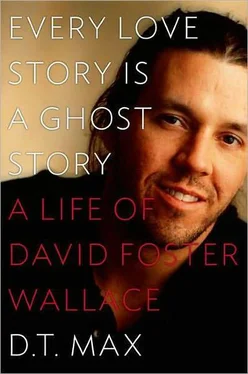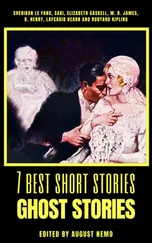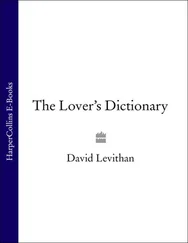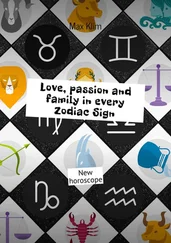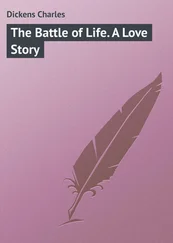Instead, things were about to get worse. Shortly before the Letterman story went to press, a different editor at Playboy had happened to watch a rerun of a Letterman show and been amazed to hear some of the dialogue from the story spoken by the actress Susan Saint James. He passed the news on to Turner, who, astonished, reported the lift to the magazine’s lawyers. For Wallace to take dialogue from a living person was a legal problem on many levels, not least because the character, also called Susan in the story, has an addiction to Xanax. (Wallace would later explain to the lawyers that the detail came from his own addiction at the time.)
The lawyers at Playboy told everyone to just stay quiet and hope for the best — it was too late to make changes in the story and likely no one would notice. All that happened on the Playboy side was Turner sent Wallace a furious letter. “Much fiction,” she wrote him, “is based on fact; as an experienced editor, I know how to deal with that.” She warned him that his reputation was at severe risk; that writers who committed plagiarism were never forgiven. “I hope this letter scares you,” she concluded. “It’s meant to scare you.”
The June 1988 issue of Playboy came out, the story ran, was well received, and nobody representing Saint James ever contacted the magazine.
But Playboy had also passed on the news to Viking Penguin that Wallace had not told them about lifting the material. Gerry Howard defended his author. (He suggested, for instance, to Turner that the whole thing was a “postmodernist prank.”) But Viking Penguin had recently suffered two expensive lawsuits and was not eager to take any chances. The publishers’ lawyers asked Howard to ask Wallace about the real-life models for stories in the collection. They wanted the source of every fact and assertion, paragraph by paragraph. Howard remembers it as “the literary equivalent of a strip search….‘Spread ’em.’”
From his parents’ house, Wallace became a writer in reverse, laying bare sources of fiction some of which he’d written two years before. He whipped off an eighteen-page response to Howard. 14He was still not sure how much trouble he was in. In his letter he tried at times to be coy:
p. 148 David Letterman has never to my knowledge said “Some fun now, boy”—at various intervals or not. It is, though, weirdly just the sort of thing he’d say.
Other places he was apologetic. He admitted he’d seen Saint James on Letterman in late 1986 or early 1987 and had thought her appearance might be
a neat device for exploring both the way Letterman’s program’s humor and interaction worked and the feelings a mildly famous person who must confront, publicly, the fact that her fame is and is deservedly mild must be experiencing.
While admitting that the essence of the story had been taken from real life, Wallace was disingenuous about the implications:
While the main character is in no way supposed to represent the person Susan St. James, her interview with Letterman, their discussion of the Oreo subject, and her way of insisting to Letterman (with much more sarcasm than is in the story) that she did the commercials for fun is truly both a subject of the story and a purloined piece of actual public data. That this might suggest to people that the story is “about” Ms. St. James the person never crossed my mind.
He remembered Turner’s asking him where he’d gotten the dialogue for the story from but said it just “did not occur to me as a thing to tell about.” Nor had he thought to mention the source of the protagonist’s name, Susan—“a colossal boner.” There was, he admitted, giving up, “at least a line a page that’s either lifted or I just don’t remember.”
“My Appearance,” he knew, was a lost cause: “In terms of legality and fairness to editors, it’s a fucked piece of work,” he wrote Howard. But he continued to fight for the other stories in the collection, where he felt less indebted to real-life models. He annotated “Little Expressionless Animals” for Howard:
p. 11—John Updike is the name of a real writer whom the character Julie dislikes a lot.
p. 20—Some of the tics mentioned here, i.e. antipathy toward digital watches and caffeine, fear of flickering fluorescence, are tics of girls I’ve gone out with.
And when he came to his beloved “Westward,” his wit revived:
p. 260—Kierkegaard is long dead, and I think his ideas are public domain — either that or a lot of professors everywhere are doing actionable stuff.
Behind the snark there was also a germ of true confusion, of mystification. If you were exploring the nature of reality, especially media reality, didn’t you have to enfold that reality in your work? Since he was a boy, Wallace had expected to know the reason behind the rules. Why could you use the names of characters from “Lost in the Funhouse” in one story, he asked Howard now, but not incidents from a Letterman show in another? “Maybe I’m stupid; I don’t see the difference.” Howard passed on the long letter to the lawyers for Viking Penguin. The stories were riddled with legal issues; Wallace had proven anything but reliable; short stories were not moneymakers. Though galleys had already been printed, they decided not to go ahead with publication, to its editor’s and author’s horror. “They didn’t even think they were gonna lose, they just thought they’d get sued,” Wallace complained to an interviewer almost a decade later, still appalled:
They invoked the principle of what they called the right of publicity. Not right to privacy, but a right to publicity, such that publishing the Jeopardy! story would be the equivalent of my capitalizing on a physical resemblance to Pat Sajak — like running around at mall openings as Pat Sajak, and receiving income that was rightfully his. Which seemed to me so utterly bizarre.
He had a point. What had he done besides what a writer must do? He had taken several entertainments most Americans were so familiar with that they could not see how important they were and showed why they mattered. He had pointed out toxins in the culture and warned readers against them. He had been enormously but not falsely entertaining. Far from trying to make money off Pat Sajak’s or David Letterman’s reputations, he had showed how they made money off of us, off of our flaccid idea of humor and our corrupted sense of self. And for this he had received an unceremonious dumping.
The turn of events would be a terrible blow to any writer, but to Wallace, who felt he had traveled so far in his work from Broom , it was particularly devastating. The demise of “Westward” was especially upsetting, as it had found no magazine publisher. He had written a suicide note that no one would ever read. But even as this debacle was unfolding, Wallace was pushing forward with his career. While he had been teaching at Amherst, he had gotten a request from the Review of Contemporary Fiction , a small avant-garde journal, to contribute a piece to their “Novelist as Critic” issue. Other participants included Gilbert Sorrentino and Barth himself. Wallace was to represent the younger generation, his pay $250. He found the company “daunting…but that obviously makes the whole thing an honor,” as he wrote to the editor, Steven Moore.
Wallace responded with a long essay, “Fictional Futures and the Conspicuously Young.” For those who had read only the soufflé-light Broom , the intensity with which he explicated the current malaise writers found themselves in might well have come as a surprise. “Our generation,” Wallace began, “is lucky enough to have been born into an artistic climate as stormy and exciting as anything since Pound and Co. turned the world-before-last on its head.” In his view, the key force in this unstable environment was the ubiquity of television, which creative writers and their teachers had not yet grasped fully:
Читать дальше
